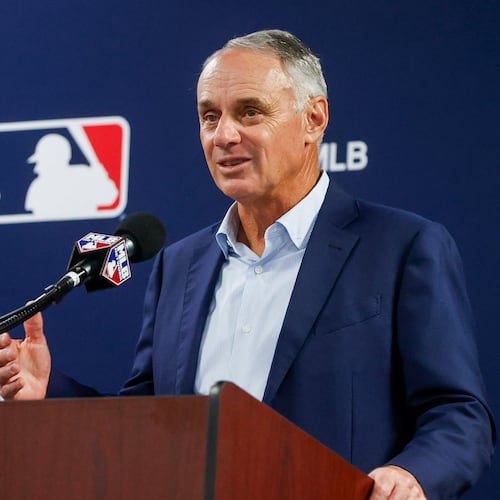Labor Day traditionally marks the unofficial start to Atlanta’s mayoral election, making for the shortest campaign this side of your senior class president.
The candidates have been making the rounds for months, but they only recently qualified for the race. Eight are thought to be legitimate. Some are more legitimate than others, but when the vote is split eight ways it doesn’t take much to become a real factor.
Whoever wins will become mayor when the city famous for rising from the ashes is seen as ascendant. But maybe not quite as much as we sometimes hear.
The Atlanta Regional Commission recently released its 2017 population estimates, and the numbers indicate the general trend of the past half-century hasn’t changed. Cherokee, Gwinnett and Henry counties — the edges of the 10-county region — are the ones that have grown their share of the overall pie since 2010.
Atlanta has added almost 10,000 people since last year. Impressive. Yet, its share of the region’s population is lower than it was in 2010 — a trend that dates to at least 1970. Forty-seven years ago, almost a third of metro Atlanta’s population lived in the central city. Now it’s 10 percent. Only if you go out a couple of decimal places can you detect even a slight rebound, from 9.96 percent in 2015 to 10.03 percent now.
Even a permanent flattening of the downward trend would be welcome news for the city. But Atlanta believes it’s positioned to soar, tripling its population while capturing some 40 percent of the region’s population growth over the next couple of decades. If so, it will take the kind of upswing that hasn’t begun to materialize.
Not that it’ll be a bad thing if the city fails to add some 1 million people between now and 2040. Doing so would require a deployment of public resources — for schools, roads and so on — that may not be worth the cost. And either way, Atlanta will still be the single most important part of an increasingly important region. But the next mayor will have to think about his or her task differently if it’s about building on Atlanta’s centrality rather than growing its population exponentially.
Here, an analogy from another season that starts around Labor Day is apt.
On a football team’s offense, the most important player is almost always the quarterback. Every player is important, and the quarterback is only one of 11, but he touches the ball on every play. Without solid to strong play from him, the team probably won’t score enough to win.
As a result, he’ll get most of the credit for wins (and blame for losses) and most likely earn the most money. The biggest part of his job is to distribute the ball to others who, in most cases, will actually score the touchdowns, even if he plays a key role in many of them.
Atlanta is just one player in this region, but it's the QB. And the difference between a great signal-caller and a mediocre one is often the difference between success and failure for the whole team. Just ask the Miami Dolphins if they wish they'd drafted Matt Ryan when they had the chance.
Ryan’s the ultimate team player at the position: smart, skilled, unselfish and dedicated. He’s a little busy right now, but maybe Atlantans can pick out a Matt Ryan from this year’s crowd.
About the Author
Keep Reading
The Latest
Featured
